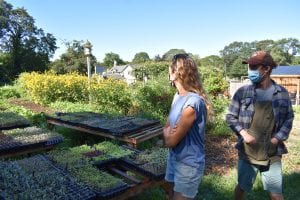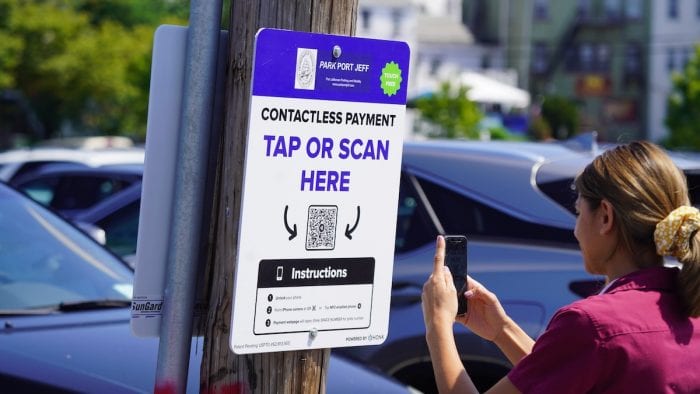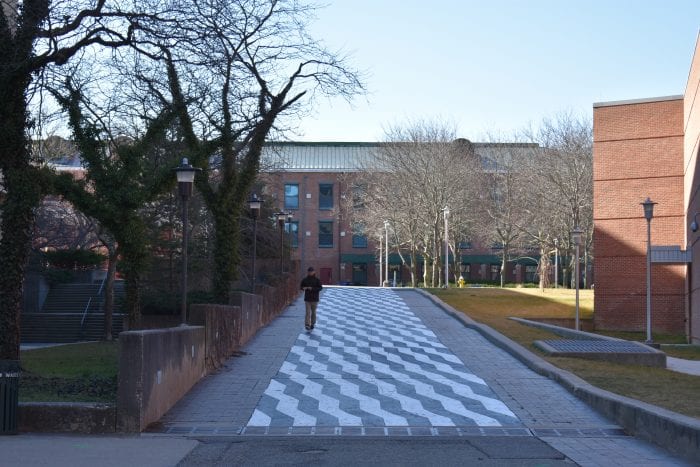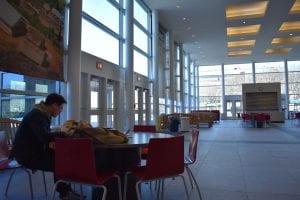The Setauket Patriots, a sometimes-controversial online conservative group, announced they plan to hold a 9/11 parade in Port Jefferson, even though this time they lack the village’s approval.
The planned march, scheduled for Saturday, Sept. 12, would take people from the train station all the way down to the 9/11 memorial across from Port Jefferson Village Hall, next to the marina parking lot. The village has not granted a permit for the march, but the group plans to go anyway.
“This is about trying to follow the mandates.”
— Margot Garant
The Facebook page for the event states the event is planned because New York City, along with Suffolk and Nassau counties, have declined to hold public 9/11 ceremonies because of the pandemic. The patriots, a known pro-Trump group, said the event “is not a Trump rally but a 9/11 never-forget-our-first-responders event.” Organizers said they expect anywhere from 150 to 200 participants.
This is not the first event the group has decided to host in Port Jeff. When hundreds marched down Main Street in Port Jefferson for a Black Lives Matter march in June, the Setauket Patriots hosted a Fourth of July car parade in response. Both the protest march and Patriots parade received permits after discussions with village officials, which created changes of time and place for both events. This time, the conservative group filed for a permit but they claim their request was denied Friday, Aug. 28.
Village Attorney Brian Egan said an executive order signed July 6 by Mayor Margot Garant effectively stopped the village from signing any new permits for marches or protests. The order was enabled by the village’s previous declaration of emergency because of the COVID-19 pandemic. At the time it was signed, Garant said the permits for such protests and parades had been “a mistake” because of the ongoing pandemic.
In regards to any further action taken by the village, Egan said nothing would be enforced by Port Jeff’s constables, and it would instead fall on the Suffolk County Police Department. In response to whether the village plans any further action against the group if it does host its parade, he again reiterated that Port Jeff’s clerk would no longer be issuing permits for any kind of march.
Garant said that beyond the moratorium on permits, the application the group filed had been incomplete and was rejected for that as well. She added the purpose of no longer allowing groups of more than 50 to gather is an attempt to comply with state orders trying to reduce the spread of COVID-19.
“It has nothing to do with who they are and what they’re doing,” she said. “This is about trying to follow the mandates.”
The mayor said the village has contacted Suffolk County police as well as state police about the planned march. They have also contacted the Town of Brookhaven, since the 9/11 memorial is technically on town-owned land. She advised that the group should try and communicate with the town instead to devise some kind of ceremony.
A spokesperson for the Setauket Patriots, who asked he not be named because of fear of being outed online, called the village’s decision to not allow any more parades unfair, considering the village has started hosting its Harborfront Park movie nights once again, though these are hosted by the village itself and therefore do not require permits.
“We’re helping Mr. Dooley, and it’s the only reason we’re having it in Port Jeff.”
— Setauket Patriots
The Setauket Patriots leader reiterated that the planned march was planned to be apolitical. He said it was planned after conversations with Daniel Dooley, a New York City Fire Department lieutenant who helped construct the Port Jeff 9/11 memorial. Dooley normally hosts a vigil at the memorial site to commemorate 9/11. He was also described as a member of the group.
“We’re helping Mr. Dooley, and it’s the only reason we’re having it in Port Jeff,” the Setauket Patriots rep said.
Efforts to contact Dooley went unsuccessful as of press time.
A few other 9/11-based events usually happen within the village to commemorate that fateful day in 2001. The Port Jefferson Fire Department normally hosts its own ceremony, and last year the Order Sons and Daughters of Italy in America hosted a candlelight vigil in Harborfront Park.
Tom Totten, the PJ fire district chairman of the fire commissioners, said they plan to host an in-house ceremony that’s not open to the public. Discussions are still ongoing whether the vigil will be recorded or livestreamed.
Other 9/11 events on the North Shore have been postponed or changed to meet the challenges of the pandemic. The usual Setauket Fire Department 9/11 event will not be open to the public and will instead be livestreamed. Other events, like the 9/11 memorial hosted in Shoreham by the Rocky Point Fire Department, are still up in the air.
Members of the Setauket Patriots group also took the lead in several controversial May protests in Commack calling for the end of the COVID-19 shutdowns. Their Facebook normally posts conservative and pro-president news, but their page also shares more posts that could well be described as inciting violence, such as videos of pro-Trump car paraders in Portland, Oregon, driving into and through counterprotesters and spraying them with pepper spray with captions like, “Bear spray is the new bug spray!”



















